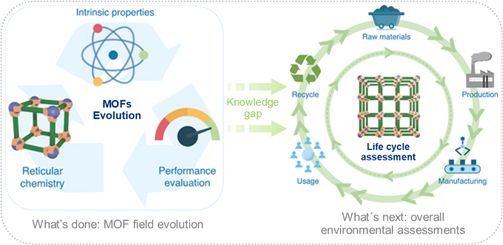Environmental Impact Assessments of Commercially available Metal-organic Frameworks
MOFs have come forth as one of the most promising next-generation crystalline porous material with exceptional structural, chemical and application diversity. Since their inception, MOFs have been developed and explored regarding their reticular tunability, physiochemical properties, and their benchmark performances toward various on-demand applications including gas adsorption/separation, heterogeneous catalysis, sensing, environmental remediation and so on. During the last three decades, the research field has grown tremendously in terms of fundamental science and materials designing that even made its way from laboratory-based explorations to industrial-scale production and commercial availability (Figure). However, the overall environmental impact assessment of these emerging materials still remains largely underexplored and overlooked by the community, creating a significant gap in terms of both scientific development and environmental sustainability.
In our study,
Advanced Functional Materials 2024, 2410751, DOI: 10.1002/adfm.202410751
we introduce the first effort toward systematic and extensive environmental impact assessment of 10 of widely researched and commercially available MOFs across18 environmental impact categories. To put these results into context, the materials are compared to each other, evaluating different synthetic methods, and identifying patterns of environmental impact. This study not only provides a blueprint for the identification of the best synthetic methods and the key factors to foster their syntheses in a “greener” and more environmentally “sustainable” fashion but also holds the potential to forge a new avenue for future designing and development of other reticular materials toward environmentally friendly synthetic methods.



